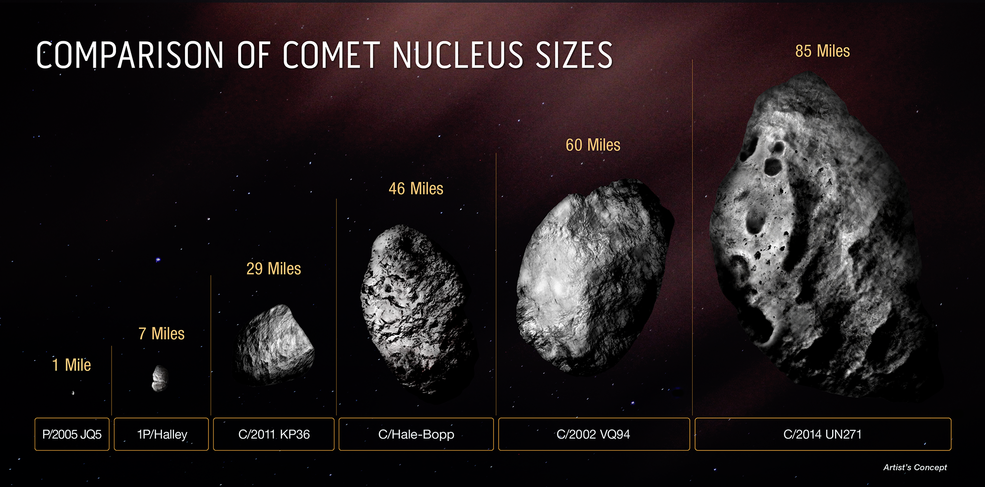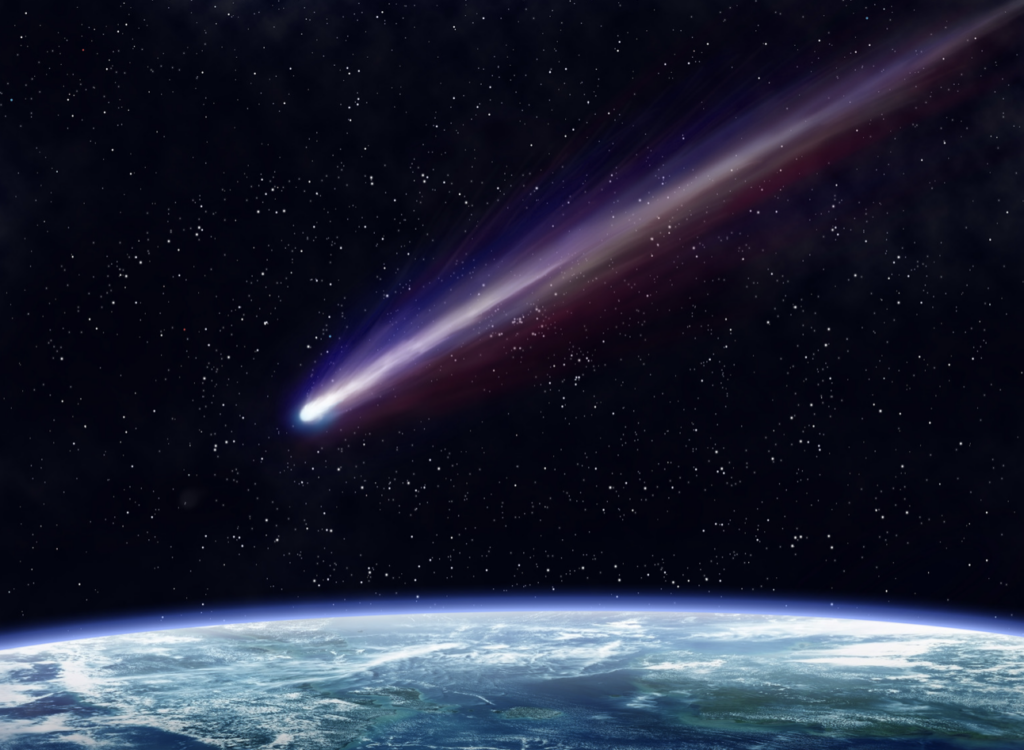The largest comet ever seen by astronomers was recently detected coming towards Earth, however, it will never get closer than 1 billion km from the Sun.
Earlier this week, the Hubble Space Telescope operated by NASA and the European Space Agency (ESA) determined the size of the largest icy comet nucleus ever seen. The nucleus of the Comet C/2014 UN271, named Bernardinelli-Bernstein, is estimated to be as large as 135 kilometres, comparable to the distance between Bruges and Namur.
Large as it may be, it is really a testament to the power of the telescope that it can identify an object at such a distance.
"This comet is literally the tip of the iceberg for many thousands of comets that are too faint to see in the more distant parts of the solar system," said David Jewitt, a professor of planetary science and astronomy at the University of California, Los Angeles (UCLA).

Comparing the size of the icy, solid nucleus of comet C/2014 UN271 (Bernardinelli-Bernstein) to several other comets. Credits: Illustration: NASA, ESA, Zena Levy (STScI)
"We've always suspected this comet had to be big because it is so bright from such a large distance. Now we confirm it is," he added.
Its mass is estimated to be up to 500 trillion tons, a hundred thousand times that of a typical comet found much closer to the Sun.
The behemoth has been falling toward the Sun for well over 1 million years and is barreling our way at 35,000 km/h from the edge of the solar system.
"But not to worry. It will never get closer than 1 billion miles away from the Sun, which is slightly farther than the distance of the planet Saturn. And that won't be until 2031," a statement from NASA read.
Determining size
The comet was first spotted in November 2010, when it was 4.8 billion km from the Sun. Although the Hubble telescope was able to detect the comet, it was so far away that it could not properly picture it.
Left: A photo of the comet taken by NASA on January 8, 2022. Right: A model of the coma helped astronomers find the precise measurement of the nucleus size. Credits: NASA, ESA, Man-To Hui (Macau University of Science and Technology), David Jewitt (UCLA).
The previous record-holder for the largest comet ever seen was comet C/2002 VQ94, with a nucleus estimated to be almost 100 km across, discovered in 2002.


